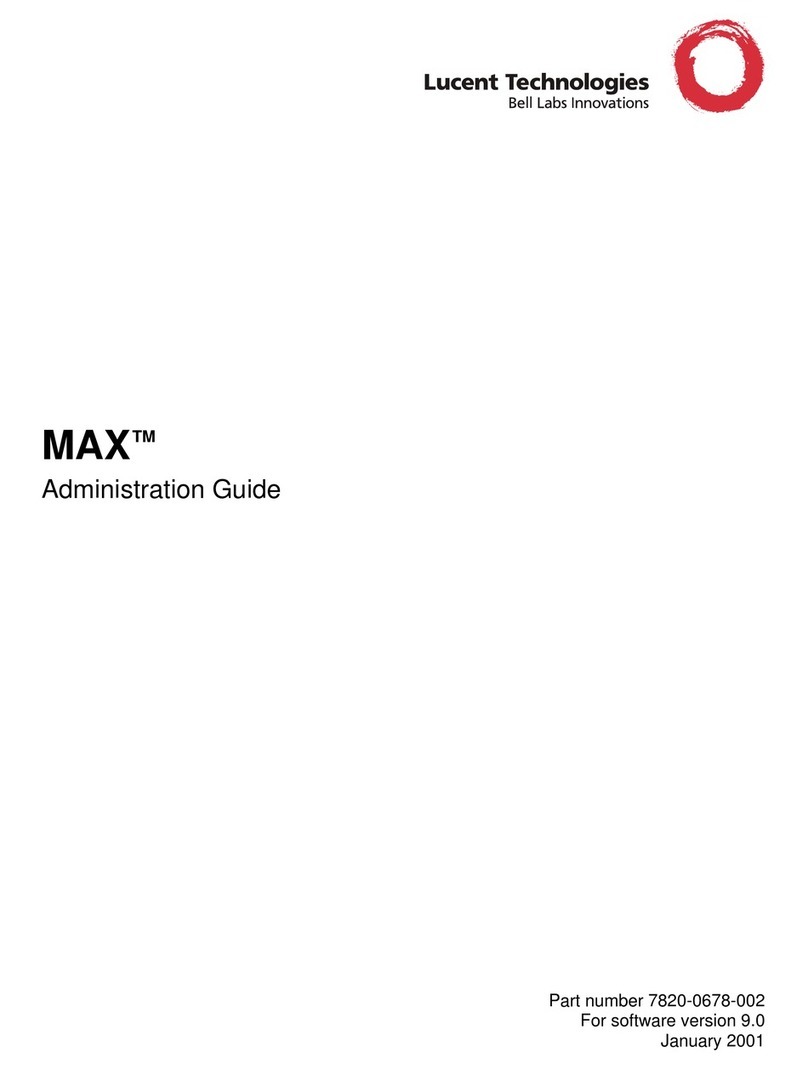
Disclaimer v
Disclaimer
Lucent Technologies makes no representations or warranties with
respect to the contents or use of this manual, and specifically disclaims
any express or implied warranties of merchantability or fitness for any
particular purpose. Further, Lucent Technologies reserves the right to
revise this publication and to make changes to its content, at any time,
without obligation to notify any person or entity of such revisions or
changes.
It is the policy of Lucent Technologies to improve products as new
technology, components, software and firmware become available.
Lucent Technologies therefore reserves the right to change
specifications without prior notice.
It is possible that some features described herein may not be available
in all parts of the world. In some instances, drawings are of equipment
prototypes. Therefore, before using this guide, it is recommended that
you consult your Lucent Technologies' representative or Lucent
Technologies office for information that is current and applicable.
Copyright
© 1999 Lucent Technologies. All rights reserved. This guide and the
Lucent Technologies software described in it are copyrighted with all
rights reserved. No part of this publication may be reproduced,
transmitted, transcribed, stored in a retrieval system or translated into
any language in any form by any means without the written permission
of Lucent Technologies.
Trademarks
Lucent Technologies, WaveACCESS, WaveACCESS LINK,
WaveACCESS NET, RFStacker, and the Lucent Technologies logo are
trademarks of Lucent Technologies Inc.
NetWare is a trademark of Novell, Inc.
Windows, Windows for Workgroups, Windows NT, and Windows 95
are trademarks of Microsoft Corporation.
OpenView is a trademark of Hewlett Packard Corporation.
All other trademarks are the property of their respective owners.




























